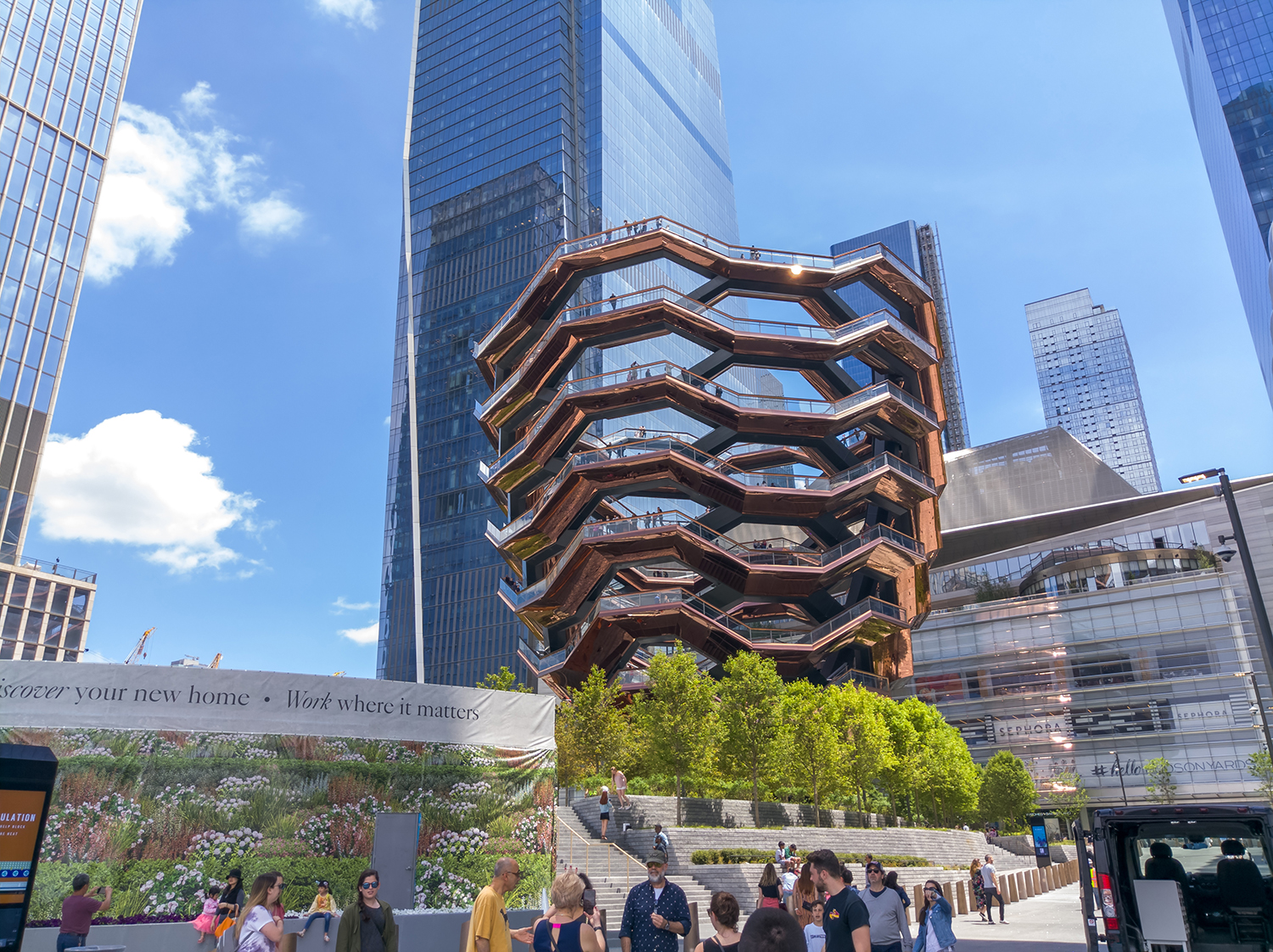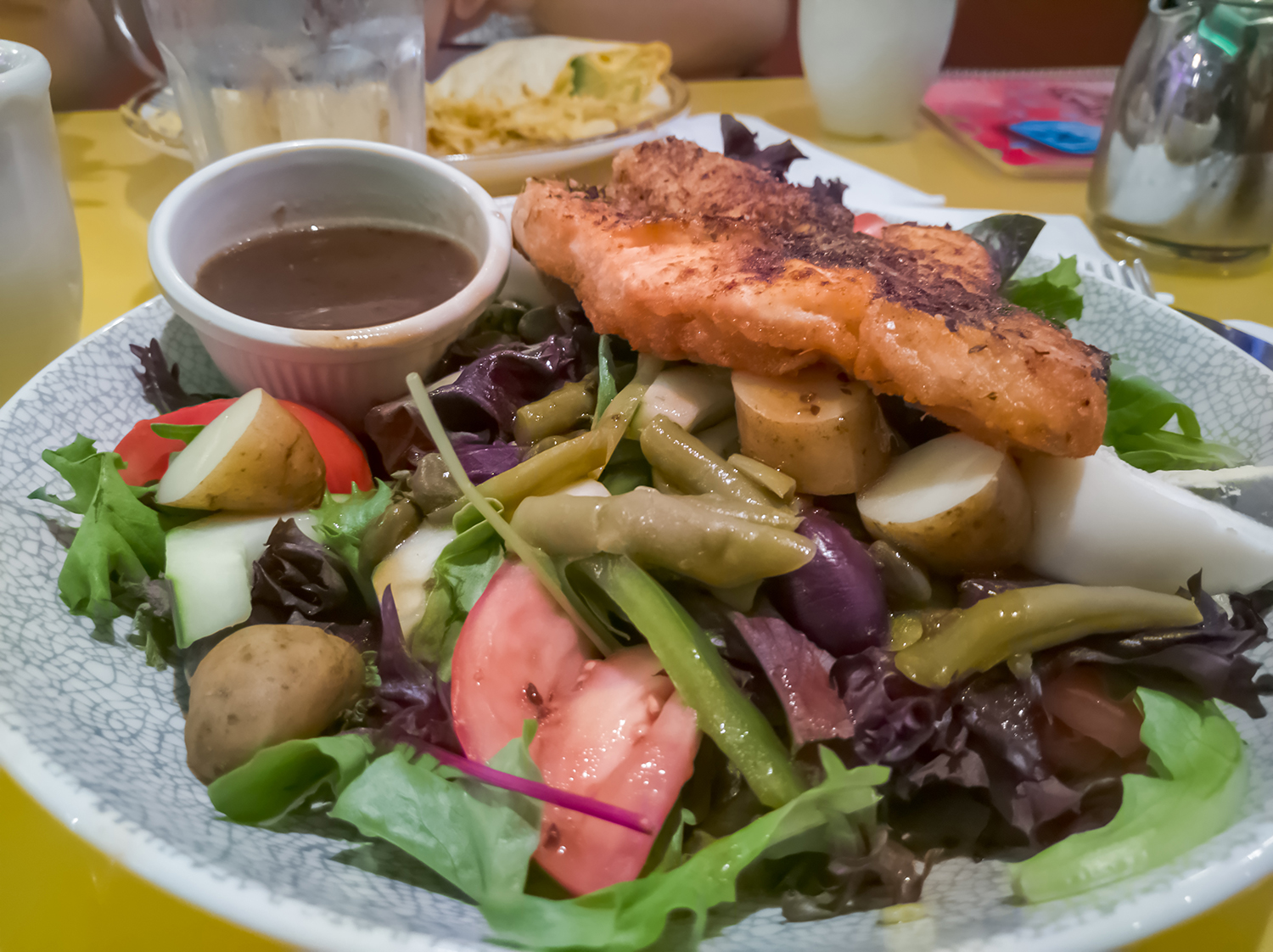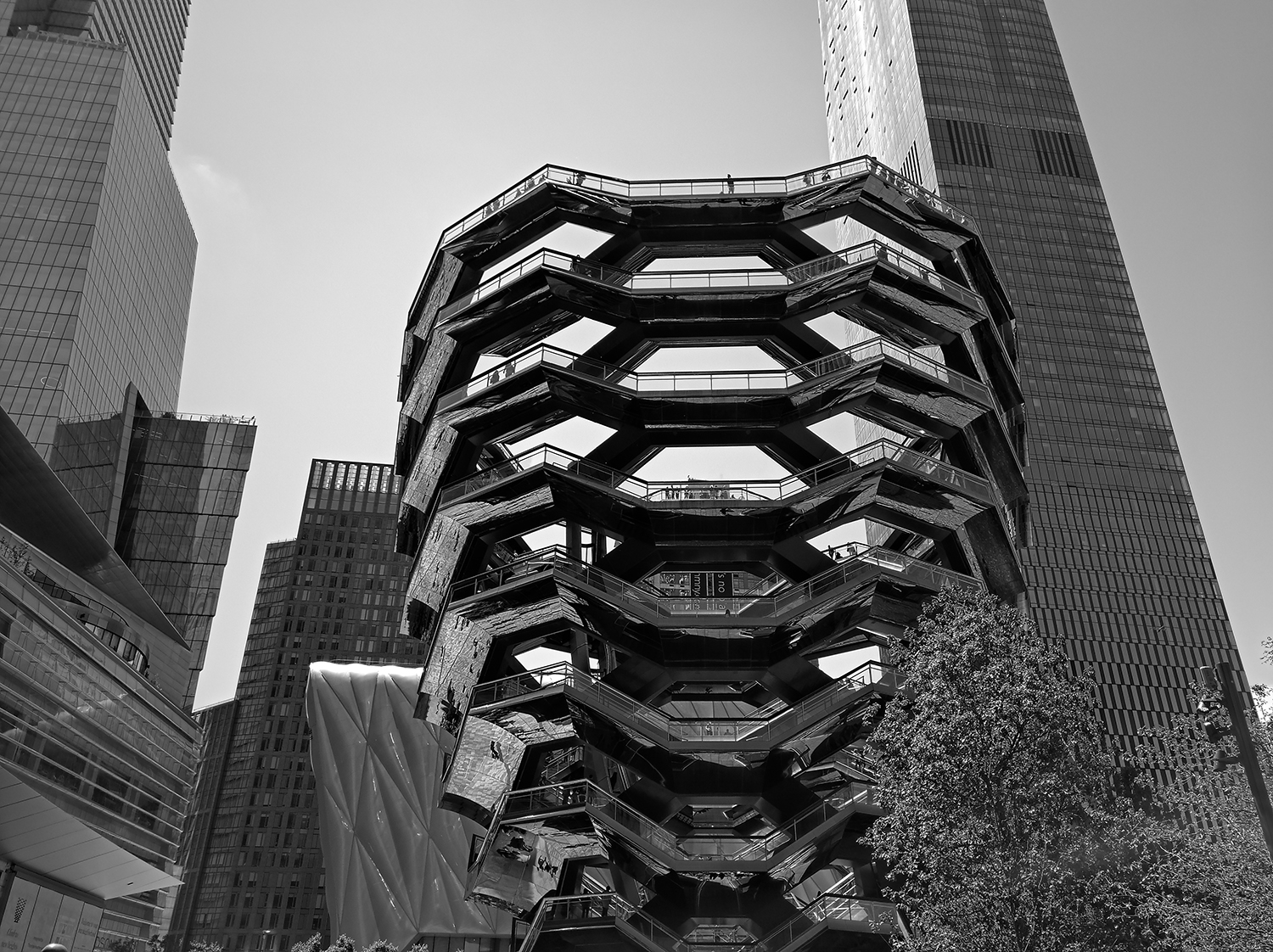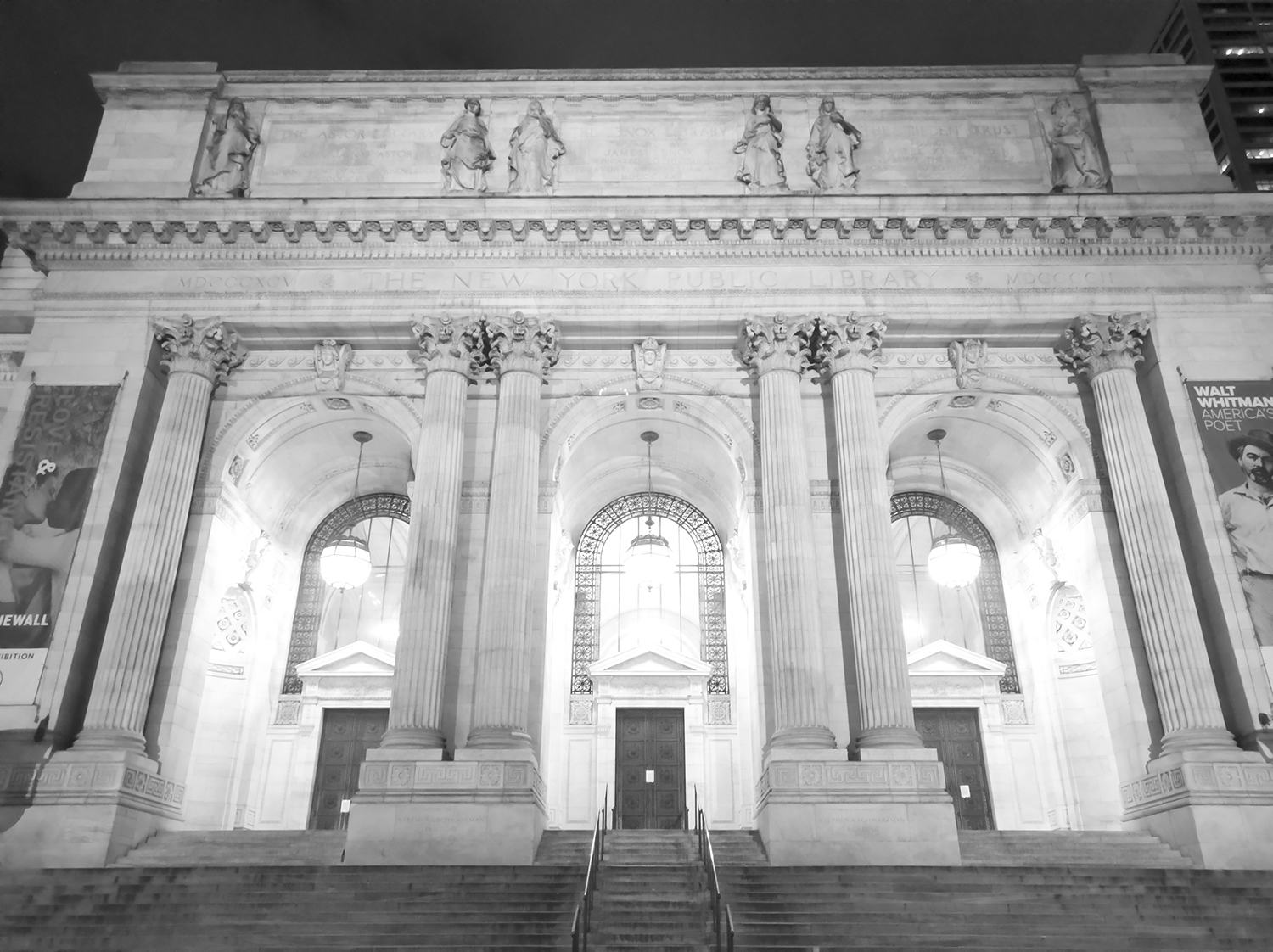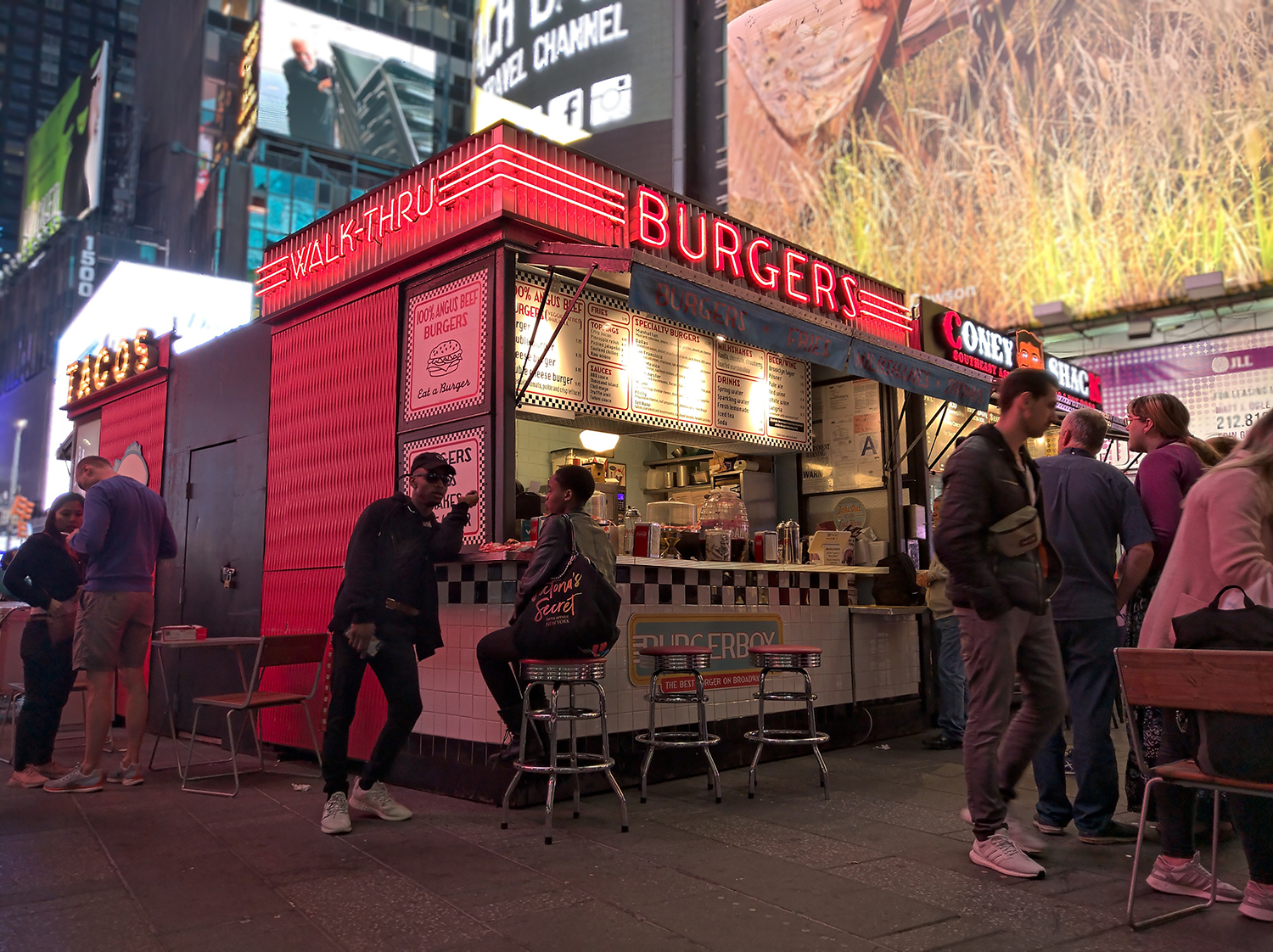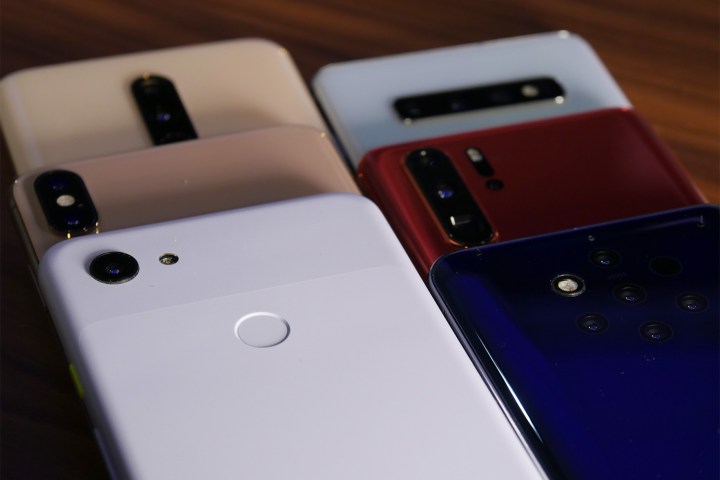
Smartphones nowadays may not offer much new year over year, but the cameras on them continue to see dramatic improvements. Throughout a year, we pit several smartphones against each other to test their cameras, and at the close for the past two years we’ve put together a gigantic camera shootout with many of the top phones to find the best.
Well, it’s the middle of 2019 and it’s time for an update. In this mid-year camera shootout, we’re looking at six of our top camera phones of the year so far: The Samsung Galaxy S10 Plus, Huawei P30 Pro, Google Pixel 3a, OnePlus 7 Pro, Nokia 9 PureView, and the iPhone XS Max. Why the iPhone? Isn’t that from 2018? Yes, for all of you iOS folk, we wanted to have an iPhone in this test so you can see how the latest Android phones compare to the best iPhone.
The cameras
First, a quick primer on the camera hardware each of these phones is packing. The Galaxy S10 Plus rocks a triple-camera system with one standard 12-megapixel lens with a variable f/1.5 to f/2.4 aperture, one 12-megapixel telephoto lens with f/2.4 aperture, and one 16-megapixel wide angle lens with an f/2.2 aperture. The former two have optical image stabilization as well. On the front, there’s a 10-megapixel lens with an f/1.9 aperture, along with an 8-megapixel lens with an f/2.2 aperture to capture depth for portrait mode selfies. It costs $1,000.
Huawei’s P30 Pro also has three main cameras: A 40-megapixel f/1.6 standard lens with OIS is paired with a wide-angle 20-megapixel f/2.2 lens, as well as a telephoto 8-megapixel f/3.4 periscope lens, which also has OIS. There’s also a time-of-flight sensor for depth sensing. Huawei said it redesigned the color filter to use RYYB instead of the traditional RGGB, replacing greens for yellow, which lets in more light. This reportedly allows for up to 40% more light to come through, resulting in better low-light images. The selfie camera packs 32 megapixels with an f/2.0 aperture. You can’t buy this phone in the United States, but it’s priced at $1,000.
The Pixel 3a and 3a XL brings Google’s flagship camera experience from the Pixel 3 to a much lower price point. You’re getting the same 12.2-megapixel single-lens camera with an f/1.8 aperture and OIS, and it comes with all the same software features, including Portrait Mode and Night Sight. There’s no Pixel Visual Core to boost image processing, but Google tuned the Snapdragon chip inside to get almost the same results. The front camera is different, though. It’s still an 8-megapixel lens, but with an f/2.0 aperture and fixed focus, and it sports a wider than usual field of view at 84 degrees. This is the most affordable phone on our list at just $400 and $480 for the 3a and the 3a XL, respectively.
The OnePlus 7 Pro, like Samsung and Huawei’s latest phones, has a triple-camera system that consists of a 16-megapixel wide-angle lens with an f/2.2 aperture, a 48-megapixel standard with an f/1.6 aperture and OIS, as well as an 8-megapixel telephoto lens with an f/2.4 aperture and OIS. The front has a pop-up camera with 16-megapixels and an f/2.0 aperture. The OnePlus 7 Pro starts at $670.
Next is the Nokia 9 PureView, which features a whopping five-camera system on the back. They all have 12 megapixels and an f/1.8 aperture, and they combine the data to create one detailed image when you snap a photo. The camera captures a RAW and JPEG image, as well as a great amount of depth info. The front has a 20-megapixel selfie camera. It costs $700.
Finally, we have the iPhone XS Max. It’s a 12-megapixel main camera with an f/1.8 aperture sitting next to another 12-megapixel telephoto lens with an f/2.4 aperture. Both have OIS. The selfie camera is Apple’s TrueDepth 7-megapixel camera system used for Face ID. It has an f/2.2 aperture. The iPhone XS Max is the most expensive on this list at $1,100.
Disclaimer
This is not a scientific test. I’ve tested these six phones in a manner that most people will use them: By shooting in auto mode, and by rating them as what’s most shareable, not necessarily what’s the most natural. Each of these phone cameras also has a different focal length, so some images may not look like they line up exactly, even if they were all taken from the same spot.
Photography is a subjective field, so you may find my winners may not be your favorite images, and that’s okay. I’m a fan of photos with a little more contrast, for example. I do try to look at these images as objectively as possible, however, and used a color-calibrated monitor to ensure I judged them in the best viewing conditions. At the end of the day, all of these phones have great cameras, and we’re really nitpicking to sort out the best.
Some quick notes: These photos were captured around two weeks ago, and OnePlus has issued a camera update since then. The camera has improved, so just factor that in while viewing the images. I do not ultimately think the 7 Pro’s results after the camera update would have drastically changed its outcome here.
The Nokia 9 PureView is also a phone meant for photographers and tinkerers. It shoots RAW and JPEG, and the RAW files give you a lot more to work with when editing the photo in apps like Adobe Lightroom. Here, we’re sticking with just the JPEG images, but we’ve included a few comparisons to show edited RAW photos and you can also check out all the RAW images from the camera here.
Finally, there are other phones we’d have loved to include here, namely the Asus ZenFone 6 and LG V50 ThinQ. We had to limit the number of devices, though, so we had to make some sacrifices. Keep an eye on this page to see upcoming camera shootouts! Now, onto the test!
Daytime
The Vessel
- 1. Huawei P30 Pro
- 2. iPhone XS Max
- 3. Nokia 9 PureView
- 4. OnePlus 7 Pro
- 5. Pixel 3a XL
- 6. Samsung Galaxy S10 Plus
We start at The Vessel, a new art installation in New York City at Hudson Yards. Starting with the Huawei P30 Pro, there’s too much of a reddish hue when you look at the buildings around the Vessel. The iPhone XS Max photo has better white balance, and looks the most natural. The Nokia 9 pops out with a beautiful-looking Vessel, but I prefer the sky on the iPhone photo. The OnePlus 7 Pro overexposes the photo (there’s more contrast in photos after the latest update).
The Pixel 3a XL does a fine job with excellent white balance and the right colors. I think it’s technically superior to the rest, but it’s surprisingly not the photo I’d want to share. That award goes to the Galaxy S10 Plus. I want the Vessel to pop, and the S10 Plus’ image certainly makes it so. The Vessel is shiny and stands out — a stark contrast to the moody and dark Vessel in the Pixel 3a photo. The rest of the image is slightly over-saturated — the trees are a bit too green, for instance — but it’s ultimately the winning shot because the focus is on the Vessel, and it does the best job of highlighting it.
Winner: Galaxy S10 Plus
Yellow Motorcycle
- 1. Huawei P30 Pro
- 2. iPhone XS Max
- 3. Nokia 9 PureView
- 4. OnePlus 7 Pro
- 5. Pixel 3a XL
- 6. Samsung Galaxy S10 Plus
Onto the next one. Let me preface by saying I have no idea what happened to the iPhone photo. I only noticed how poor it was at a later date, but that’s the whole point of this test — to put these camera phones in a real-world test just as you would experience them (no retakes)! Naturally, the iPhone XS Max photo comes last as it’s far too dark and stripped of color. The Huawei photo is slightly overexposed, and it lacks contrast; the sky is muted. The same applies to the OnePlus 7 Pro photo.
The Pixel 3a XL image is a good example of how important auto-focus is — if you zoom in close, you’ll see the camera focused on the license plate of the car in the back instead of the motorcycle, which isn’t sharp. The building on the right is also a little too dim.
It comes down to the Nokia 9 and the Galaxy S10 Plus. Similar to the first image, I find the Nokia’s photo to be technically superior; the motorcycle is impressively sharp and the building on the right, as well as the scaffolding on the left, are reasonably well-lit. Swap to the Galaxy S10 Plus photo, though, and the colors pop. I wanted to highlight the yellow on the bike, and the Galaxy S10 Plus nails it. It’s striking and visually interesting, and it manages to maintain the exposure of the surroundings as well. Some of you may not like the over-saturated image, and that’s fine. I still believe it’s the most shareable out of all of these.
Winner: Galaxy S10 Plus
Evening into night
The Theater
- 1. Huawei P30 Pro
- 2. iPhone XS Max
- 3. Nokia 9 PureView
- 4. OnePlus 7 Pro
- 5. Pixel 3a XL
- 6. Samsung Galaxy S10 Plus
The sun’ getting low, so I headed to the movies. I like this collection of images because the results are quite varied. What I was trying to capture was the neon signs of the theater, while still trying to keep the rest of the image well exposed. So I can take the iPhone, OnePlus, and Samsung photos out of the running as I dislike the way the AMC logo looks in their respective images.
I like the darker look of the Pixel 3a XL photo, and it’s among the few where you can easily see the movie titles under the AMC logo. It’s a little too underexposed, though. The win comes down to the Huawei P30 Pro and the Nokia 9 PureView. The latter image is a little flat, lacking contrast and definition. The Huawei photo has plenty of that, though it also has a reddish tinge throughout. I’d share the Huawei P30 Pro’s photo here — it also does the best job of keeping the cloudy sky on the right well exposed.
Winner: Huawei P30 Pro
Burgers in Times Square
- 1. Huawei P30 Pro
- 2. iPhone XS Max
- 3. Nokia 9 PureView
- 4. OnePlus 7 Pro
- 5. Pixel 3a XL
- 6. Samsung Galaxy S10 Plus
This is my favorite scene in this entire comparison. I love all things neon, which is what drew me to capture this burger joint in Times Square. I want the neon “Burgers” sign to be sharp and filled with contrast, and there are two phones that give me what I want: The Nokia 9 PureView and the Google Pixel 3a XL.
The Burgers sign on the Huawei photo is strangely wavy, but the rest of the image looks great. The iPhone XS Max comes close, but it doesn’t nail the white balance; the OnePlus 7 Pro’s image is completely flat and muted. I’d say the Galaxy S10 Plus’ photo comes in third because it’s excellent all around, but I prefer just a little more contrast. The Pixel 3a XL is what I was going for: It’s darker and suits the mood better, creating a great atmosphere. There’s great white balance, the neon sign looks the best with the perfect shade of red, and it’s pin sharp. The Nokia 9 also does really well, but it falls short with white balance as there’s a bit too much yellow on the menu with overexposed highlights.
Winner: Pixel 3a XL
The Library
- 1. Huawei P30 Pro
- 2. iPhone XS Max
- 3. Nokia 9 PureView
- 4. OnePlus 7 Pro
- 5. Pixel 3a XL
- 6. Samsung Galaxy S10 Plus
It’s dark, and I’m in front of the New York Public Library. Right off the bat, I’m not a fan of the yellow-ish tones several of the phones produce for the building; this includes the iPhone XS Max, Galaxy S10 Plus, and OnePlus 7 Pro. The photos aren’t bad, but the building wasn’t that color, and I’m a fan of cooler colors. It’s why I lean toward the other three, but the Nokia 9’s photo is a little too flat.
So it comes down to the P30 Pro and Pixel 3a XL. You’ll need to make sure you view these two photos on a good monitor or display, as I’ve found the Pixel photo looks far darker on lesser-quality displays. It’s the winner, though. Largely because the Huawei photo goes too aggressive with the white balance, and the building loses a bit of character. The Pixel 3a photo retains it, is a smidgen sharper, and it does a great job of maintaining the yellow color of the indoor lights you see through the glass windows.
Winner: Pixel 3a XL
Plants at Night
- 1. Huawei P30 Pro
- 2. iPhone XS Max
- 3. Nokia 9 PureView
- 4. OnePlus 7 Pro
- 5. Pixel 3a XL
- 6. Samsung Galaxy S10 Plus
Near the public library is Bryant Park, which is filled with trees and plants. In the dark, this can be tricky for most phones, but the results across the board are admirable. It’s only the iPhone photo that’s disappointing; it’s not sharp and is too dark. The Nokia 9 is next, but it delivers a strong, sharp photo — it’s just a shame the image is too dark. This, however, is where editing the RAW image will help boost brightness.
The OnePlus Pro’s photo looks crisp at a glance, but zoom in and it’s super grainy and looks oversharpened. The Pixel 3a XL, Galaxy S10 Plus, and the P30 Pro produce the best results here. The Pixel’s image is a tad too warm for my tastes, and the Huawei photo is the sharpest of the lot. But the win goes to the Galaxy S10 Plus, as it exposes the entire image well and adds a good deal of realistic-looking color to make the photo something you’d want to share.
Winner: Galaxy S10 Plus
Night Modes
As we go into the dark, several phones have dedicated night modes that are designed to produce better low-light photos. The cameras capture multiple images at different exposures and stitch them together to create one well-exposed photo, and it often means you’ll need to stand still for a few seconds to get these results. The Pixel 3a has Night Sight, the Huawei P30 Pro has Night Mode, and the OnePlus 7 Pro has Nightscape. OnePlus said Nightscape is designed specifically for buildings and skylines, and is not to be used for ultra low-light situations, though, we encountered issues using it consistently as you’ll soon see.
Night Mode vs. Night Sight vs. Nightscape
- 1. Huawei P30 Pro
- 2. OnePlus 7 Pro
- 3. Pixel 3a XL
We’re revisiting the same photo of the plant in Bryant park so you can compare it with the photos from the previous section. The OnePlus 7 Pro had issues, to put it lightly. It’s not meant to work in these kinds of situations, and it’s clearly unusable. That narrows it down to the Huawei and Google phones, and for me the pick is easy. Yes, the Huawei P30 Pro photo is brighter overall, but it also looks highly-processed and over-sharpened. The Pixel 3a does just as good of a job, however, while looking natural. It’s the winner.
Winner: Pixel 3a XL
Night modes vs. phones that don’t have it
- 1. Huawei P30 Pro
- 2. iPhone XS Max
- 3. Nokia 9 PureView
- 4. OnePlus 7 Pro
- 5. Pixel 3a XL
- 6. Samsung Galaxy S10 Plus
How do these night modes compare to phones that don’t have a dedicated night mode? Before we look, I didn’t use the Nightscape image for the OnePlus 7 Pro because it came out similarly blurry. I’ve tested it after the update and Nightscape seems to actually work a bit better now. The OnePlus 7 Pro photo you see here is just the regular mode, but the Pixel 3a uses Night Sight and the Huawei P30 Pro uses Night Mode.
The results are solid across the board, though colors seem to suffer the most. The Nokia 9 also overexposes the Empire State building, and the iPhone photo is a little blurry. Huawei’s Night Mode is certainly brighter than the rest, but the colors are muted, resulting in a dull image. The Galaxy S10 Plus’ photo lacks definition and isn’t as detailed, which makes the final two contenders the Pixel 3a XL with Night Sight and the standard camera on the OnePlus 7 Pro.
The winner? The OnePlus 7 Pro. Yes, there’s more grain all around, but it’s not unnaturally saturated like the Pixel photo, and the trees look absolutely gorgeous and sharp. It’s the one I’d share.
Winner: OnePlus 7 Pro
Food
Salmon Salad
- 1. Huawei P30 Pro
- 2. iPhone XS Max
- 3. Nokia 9 PureView
- 4. OnePlus 7 Pro
- 5. Pixel 3a XL
- 6. Samsung Galaxy S10 Plus
Let’s move onto food! Who doesn’t love taking pictures of the food you’re about to devour? First up is a Salmon Salad from a diner, and I’ll start by saying I like the Pixel 3a XL’s photo the best. It has the right amount of color that makes the salad pop, and it’s super sharp. It also has excellent white balance if you look at the plate. The Huawei P30 Pro does a solid job, too, but the photo has a reddish hue overall. Details on the OnePlus 7 Pro’s image looks soft, the iPhone XS Max has poor white balance, and the Galaxy S10 Plus suffers from the same problem. The Nokia 9 image is sharp, but the colors are muted, and the result looks unappetizing.
Winner: Pixel 3a XL
Ramen Indoors
- 1. Huawei P30 Pro
- 2. iPhone XS Max
- 3. Nokia 9 PureView
- 4. OnePlus 7 Pro
- 5. Pixel 3a XL
- 6. Samsung Galaxy S10 Plus
It’s a similar story with this ramen dish. Take almost everything I said in the previous example, and apply it here. The Pixel 3a XL photo stands out for its detail, white balance, and appetizing color. The rest of the photos are still great, but the 3a has an edge.
Winner: Pixel 3a XL
Portrait Mode
What about Portrait Mode? It’s when a subject stays in focus and the background is blurred, mimicking a DSLR portrait. Almost every smartphone has a dedicated portrait mode now, so which is the best?
Girl Outdoors
- 1. Huawei P30 Pro
- 2. iPhone XS Max
- 3. Nokia 9 PureView
- 4. OnePlus 7 Pro
- 5. Pixel 3a XL
- 6. Samsung Galaxy S10 Plus
This is a tough one because most of these photos are very good. My favorites are from the Pixel 3a XL, iPhone XS Max, and Galaxy S10 Plus. I landed with the S10 Plus as the winner — it’s better exposed and looks stunning. There’s a great amount of detail, the blur accuracy around the subject is good, the blur itself looks beautiful, and the colors are strong. It’s an excellent photo.
Winner: Galaxy S10 Plus
Late-night Poses
- 1. Huawei P30 Pro
- 2. iPhone XS Max
- 3. Nokia 9 PureView
- 4. OnePlus 7 Pro
- 5. Pixel 3a XL
- 6. Samsung Galaxy S10 Plus
Portrait Mode fails in low light for many smartphones that rely on a secondary camera for depth information. The OnePlus photo here is the weakest, with shoddy detail. I surprisingly fell in love with the Nokia 9’s photo, however; it looks natural and manages to do a stellar job with the depth — the bokeh from the light bulbs at the top look great — and it doesn’t have strangely over-saturated colors like the other photos.
The Galaxy S10 Plus comes in second, but I’m not a fan of the pumped up colors, even if the bokeh is gorgeous. The iPhone and Pixel photos look lackluster, and so does the Huawei image with its muted colors.
Winner: Nokia 9 PureView
Zooming in
Most of these cameras have a telephoto lens that enables optical zoom. It’s better than digital zoom, which crops the image. Some phones with digital zoom — like the Pixel 3a — use artificial intelligence to enhance the image, but it can only go so far. Optical zoom is always better, though, the camera may not always use this lens in low-light situations.
Zooming on the Vessel
- 1. Huawei P30 Pro
- 2. iPhone XS Max
- 3. Nokia 9 PureView
- 4. OnePlus 7 Pro
- 5. Pixel 3a XL
- 6. Samsung Galaxy S10 Plus
Let’s start with zooming in all the way on The Vessel. There’s a clear winner here, and it’s with the Huawei P30 Pro’s 10x hybrid zoom. The P30 Pro can zoom in further with its 50x zoom, but the results are poor. At 10x, you can get some excellent shots like the one here. Most of the other photos here are unremarkable, though the OnePlus 7 Pro deserves a shout out for its effort.
Winner: Huawei P30 Pro
Optical Zoom on the Empire State Building
- 1. Huawei P30 Pro
- 2. iPhone XS Max
- 3. Nokia 9 PureView
- 4. OnePlus 7 Pro
- 5. Pixel 3a XL
- 6. Samsung Galaxy S10 Plus
Here, we’re using the base optical zoom on phones that have them, and manually zooming in digitally with phones that don’t. The iPhone XS Max, with its 2x optical zoom, holds its own, but the Empire State Building (ESB) is not entirely in focus, or sharp. The Huawei P30 Pro takes things in a little closer with its 5x optical zoom, with a strong result, but it fades everything around the ESB. The OnePlus 7 Pro’s 3x optical zoom delivers a solid photo that’s marred with a lot of noise.
The Galaxy S10 Plus’ 2x optical zoom overexposes the ESB, though the rest of the photo looks good. The Nokia 9 has no optical zoom and has a lot of noise, but it’s a decent shot. The Pixel 3a XL is the surprising winner here, as it does a great job of showing off the ESB without terribly underexposing anything. It’s also surprisingly sharp, despite not having an optical zoom.
If I adjusted where I stood to make the Huawei photo similar to the rest, I think the camera would have come out on top here. But I was trying to make sure I stood in the same spot for all these photos.
Winner: Pixel 3a XL
Max Zoom on the Empire State Building
- 1. Huawei P30 Pro
- 2. iPhone XS Max
- 3. Nokia 9 PureView
- 4. OnePlus 7 Pro
- 5. Pixel 3a XL
- 6. Samsung Galaxy S10 Plus
These phones can go even further with digital or hybrid zoom. And it’s why the Huawei P30 Pro’s 10x hybrid zoom takes the cake again. It’s easily the sharpest image, with clean lines and good colors. The detail is incredible.
Winner: Huawei P30 Pro
Selfies
Sunny Selfie
- 1. Huawei P30 Pro
- 2. iPhone XS Max
- 3. Nokia 9 PureView
- 4. OnePlus 7 Pro
- 5. Pixel 3a XL
- 6. Samsung Galaxy S10 Plus
Now, let’s turn our attention to the front-facing cameras. All these photos are great, though the Nokia 9 PureView was giving me trouble and kept refusing to take a photo. A restart didn’t quite fix it, but tapping enough times finally made it snap a photo, though a slightly blurry one. I thought the OnePlus 7 Pro, on the other hand, lacked detail (this photo was taken after the latest June update).
The rest are quite similar, so I decided to settle it based on skin tone and the color of my jacket. The iPhone and the Pixel got my jacket color accurate, with the Huawei and Samsung photos offering slightly brighter-looking jackets. My skin tone in the Samsung photo is a little too reddish, and while I didn’t have many qualms about the Huawei and Pixel photos regarding my skin color, I thought the iPhone captured it best. It gets the win, but it was a tough call.
Winner: iPhone XS Max
Portrait Mode Selfie
- 1. Huawei P30 Pro
- 2. iPhone XS Max
- 3. Nokia 9 PureView
- 4. OnePlus 7 Pro
- 5. Pixel 3a XL
- 6. Samsung Galaxy S10 Plus
Most phones feature a portrait mode that works with the front-facing camera as well. Let’s get the poor shots out of the way: The Huawei photo failed to add a blurred background after multiple attempts, so while it’s a good photo, it doesn’t quite pass the test here. The Nokia 9’s selfie camera has problems with high-contrast scenarios, so it greatly overexposes the image.
The rest look great, but it’s the iPhone XS Max that stands out when you look at the color of the background. The sky is a beautiful blue, and the trees are a stronger green. The background in all the other photos looks overexposed and washed out.
Winner: iPhone XS Max
Low-light Selfie
- 1. Huawei P30 Pro
- 2. iPhone XS Max
- 3. Nokia 9 PureView
- 4. OnePlus 7 Pro
- 5. Pixel 3a XL
- 6. Samsung Galaxy S10 Plus
There’s low light, and then there’s even lower light. I wanted to see how well these cameras would fare in close to pitch blackness. There was a TV behind me that illuminates the side of my face slightly. The Huawei P30 Pro, Nokia 9, and OnePlus 7 Pro all produced an impressive photo, even if all the images here are quite dark. The Galaxy S10 Plus offers the brightest image, but the quality is worse off.
It comes down between the Nokia 9 PureView and the OnePlus 7 Pro. I like the stronger detail the Nokia photo shows, but the OnePlus image retains a lot of color, despite smoothing out all the details. I’d share the Nokia photo, but the OnePlus 7 Pro is an excellent alternative.
Winner: Nokia 9 PureView
That being said, the Pixel 3a XL has a trick up its sleeve: Night Sight works on the selfie camera. It’s one of the few phones where a dedicated night mode exists for the selfie camera. Take a look at the result, and it blows away the competition. The image isn’t the sharpest, but it’s leaps and bounds more visible and colorful than the rest, and that’s what ultimately counts as it’s the photo we’d all share.

Insert Night Sight Selfie from Pixel 3a folder
Bonus point: Pixel 3a XL
Special features
Each of these smartphone cameras has a lot more they can do when looked at individually. I wanted to showcase some of that here in this special features section.
Wide-angle shootout
- 1. Huawei P30 Pro
- 2. OnePlus 7 Pro
- 3. Samsung Galaxy S10 Plus
Three of these phones have a wide-angle camera that deserves a mention: The Huawei P30 Pro, Galaxy S10 Plus, and OnePlus 7 Pro. The wide-angle lens adds another layer of versatility, enabling you to be more creative with your photography. In this wide-angle shot of the Vessel, you can see how much more you can see in the shot when comparing it to the first set of photos featured in this comparison. Who’s the winner? It’s easy: The Galaxy S10 Plus.
The OnePlus 7 Pro’s photo lacks contrast, and the P30 Pro’s image adds that reddish hue again. The colors on the Galaxy S10 Plus photo pop out and are far more pleasing to look at, and the Vessel itself stands out yet again.
Winner: Galaxy S10 Plus
Miscellaneous
- 1. Samsung Galaxy S10 – Color Point Live Focus
- 2. Huawei P30 Pro – 50x zoom
- 3. Nokia 9 PureView – Monochrome
Here are a collection of other photos from some of these phones that I wanted to include to show off select features. First is the Color Point Live Focus mode on the Galaxy S10 Plus, which makes the background black and white. An example of 50x zoom from the P30 Pro is also included, as well as an image produced using the dedicated Monochrome mode on the Nokia 9. There are also several edited RAW images where colors have been boosted and a depth effect added.
Conclusion
Finally, we’re at the close. Who’s the winner? The tally ends with six wins for the Pixel 3a XL, with the Galaxy S10 Plus coming in second with five wins and the Huawei P30 Pro nabbing third place with three wins. The iPhone XS Max and the Nokia 9 PureView are tied for fourth place with two wins, and the OnePlus 7 Pro sits at the bottom with just one win. I do think the OnePlus 7 Pro has a chance to snag another win or two with the latest update, but I don’t think it would have been able to crack the top three on this list.
What’s most impressive is that the winning phone is also the cheapest at just $480 (it’s even less if you buy the smaller Pixel 3a, which has the same camera). It goes to show that it’s not just about the hardware embedded in the phone, but the software optimization and artificial intelligence that go along with it. Remember, your winning photos may be different from mine, so your winner may be different. There’s still no denying, however, that all these phones can produce stunning photos, and you’ll be happy if any of them are in your pocket as your camera sidekick.
Editors' Recommendations
- I compared two of the year’s best phones in an extreme camera test
- I tested the Pixel 8 Pro and iPhone 15 Pro. This one has the best camera
- I tested the cameras on 2 great Android phones and it was brutal
- This is what happens when you compare 4 phones in an 800MP camera test
- You aren’t ready for this Galaxy S23 vs. iPhone 14 Pro camera test















































































































